Homemade Peach Cider with Honey
I have a riddle for you: If mead is alcohol fermented with honey, and cider is alcohol made from fermenting apple juice, and a melomel is mead made with fruit juice, what do you call apple juice fermented with honey? LOL, it’s called Cyser. But you can call this peach cider or peach cyser; both are correct!
Cyser is both a mead (melomel) made with apple juice and a cider fermented with honey.
In our blood orange cider recipe blog, I mentioned that cider must be 35% apple juice to be considered “cider.” Well, this recipe is mostly apple juice with some fresh peach and honey syrup incorporated.
Another thing I’ve learned about cider is that the only difference between apple cider and apple wine is the alcohol content. If you brew some apple cider above 8.5% ABV, it is considered a wine, not a cider—so many rules. This peach cider is around 9% ABV, so call it cider or wine or cyser or mead; it doesn’t matter to me.
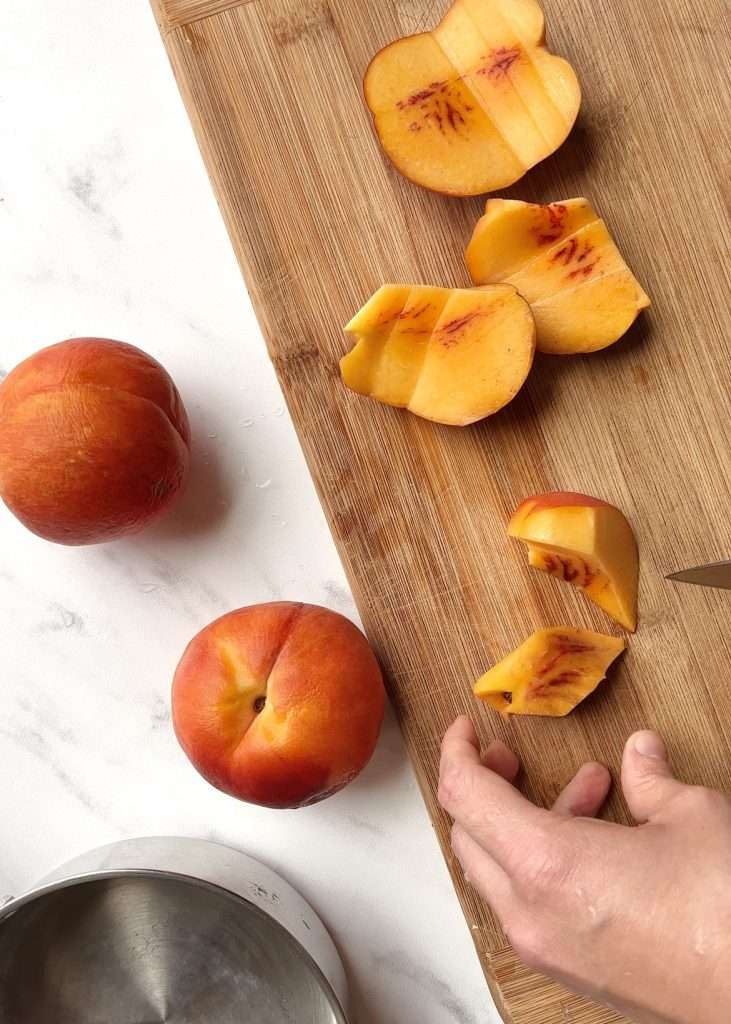
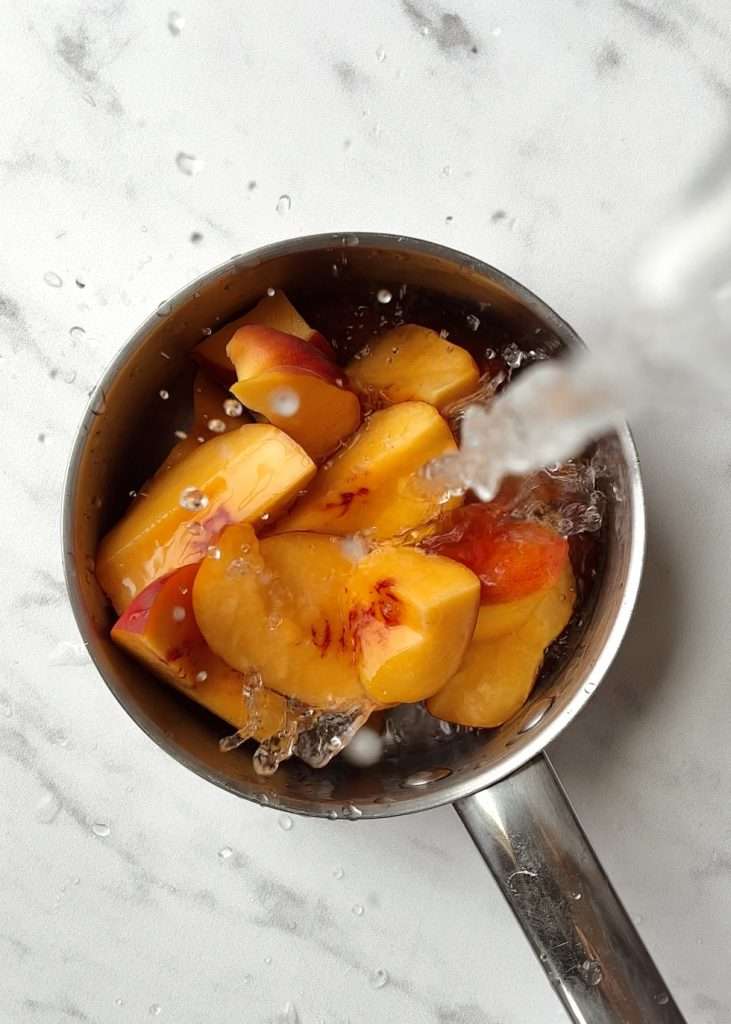

Peach Cider Recipe
My peach hard cider recipe produces light and fresh flavors that are perfect for late summer! I like to bottle peach cider with honey to create a sparkling cider. However, it’s also fantastic as a still cider.
I love pairing this fresh sparkling peach cider with our Sauerkraut Arugula Salad with Goat Cheese and Berries or Summer Lemon Kale Salad with Brined Salmon on hot summer days.
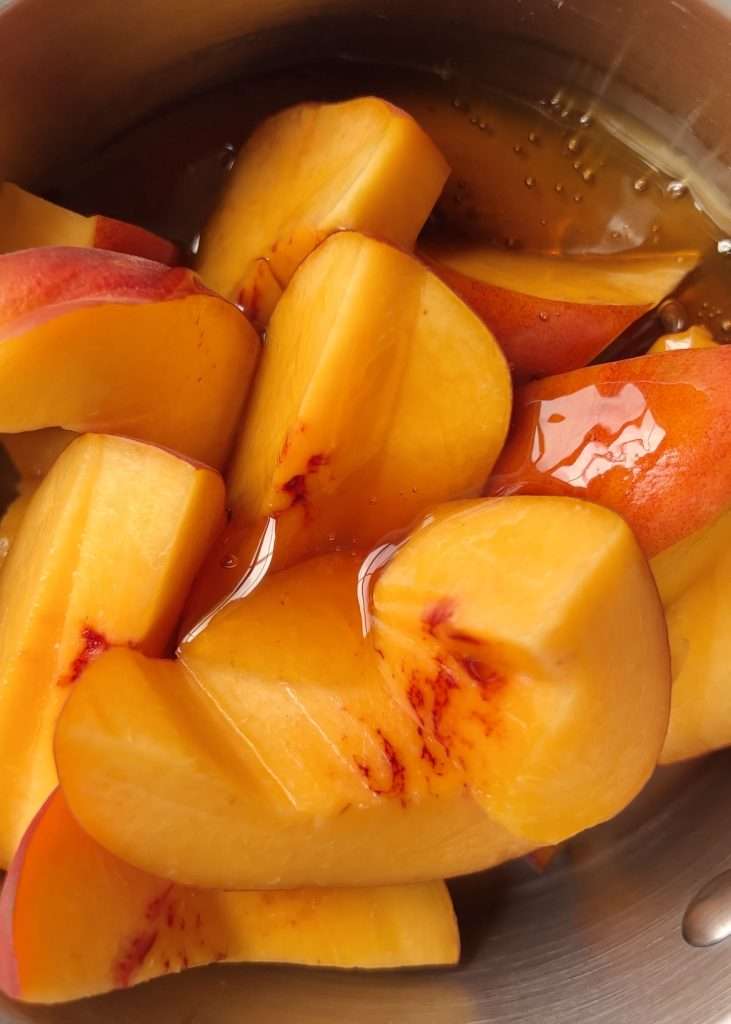
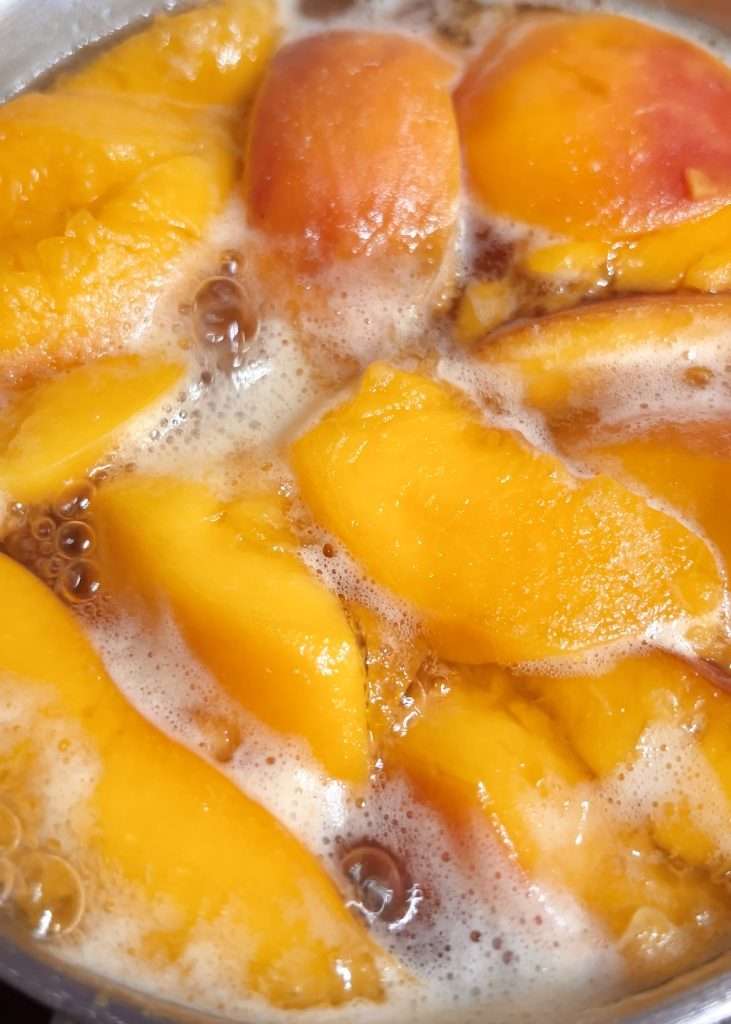
Peach Cyser (Peach Cider Fermented with Honey)
I think brewing at home intimidates many people, so I made this recipe as easy as possible.
With this recipe, you can just buy some organic apple juice at the store. I used the 365 brand of organic pressed apple juice from Whole Foods. Make sure it is 100% apple juice and free from any preservatives and additives. Also, make sure the juice does not have any added sugar.
For the peach syrup, you will also need fresh peaches, and organic peaches work best. You can use frozen peaches, but I love making this when fresh peaches are in season.
Here are the ingredients you’ll need:
- 2 Grams Cider Yeast (Saccharomyces bayanus)
- Organic Pasteurized Apple Juice
- About a pound and a half of organic yellow peaches
- Filtered Water
- Raw Honey
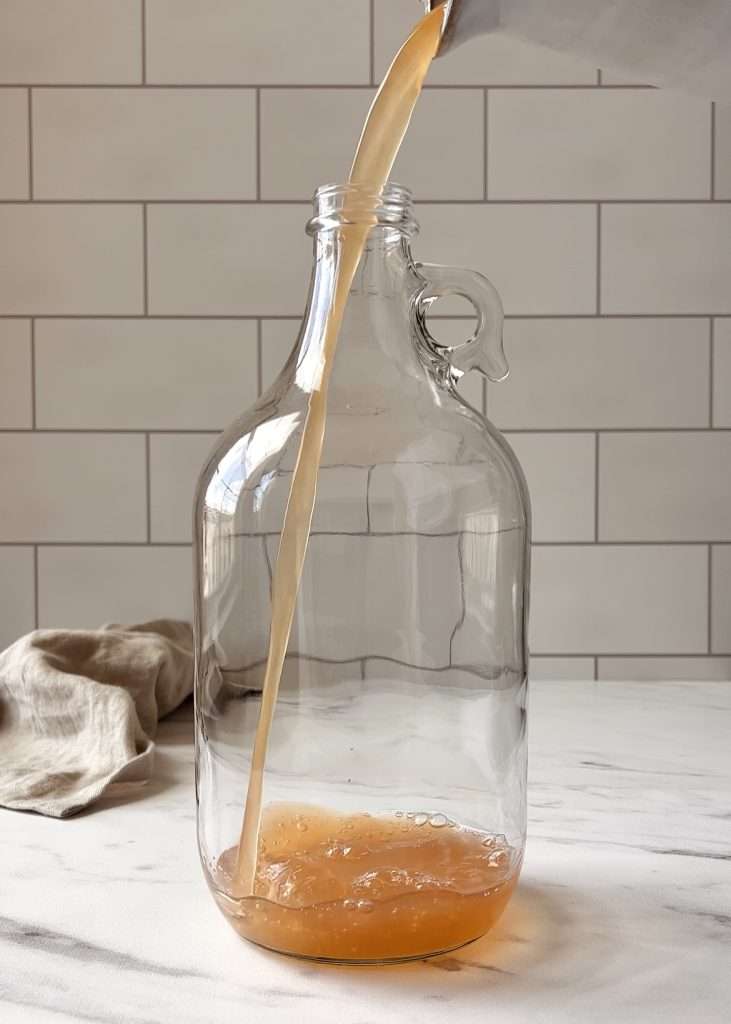
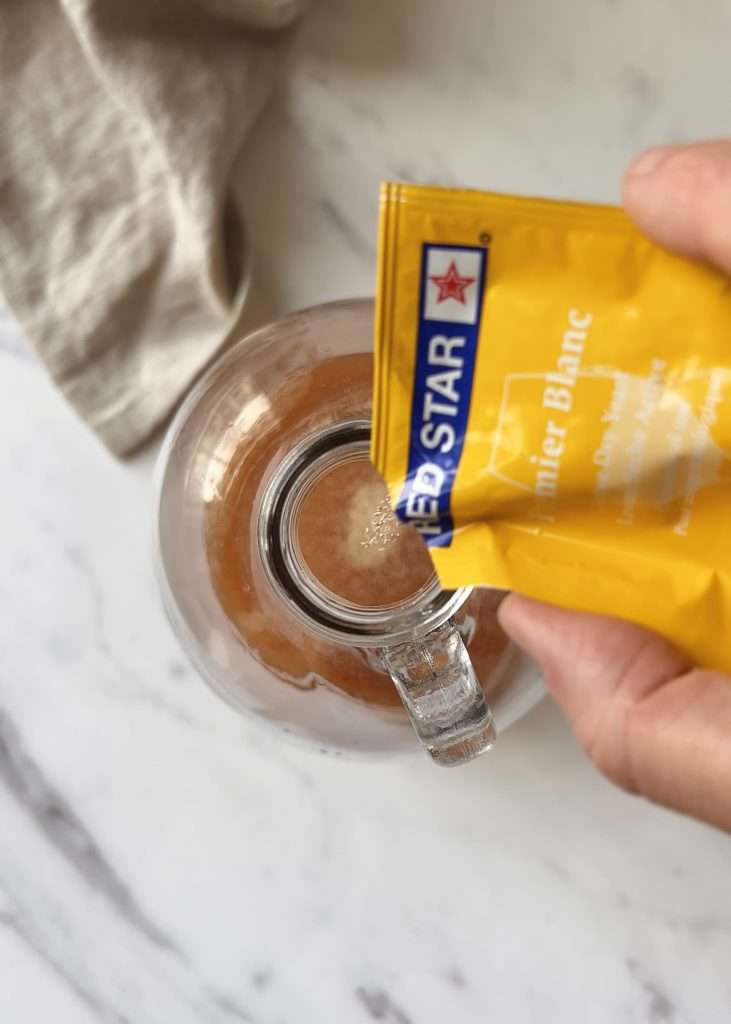
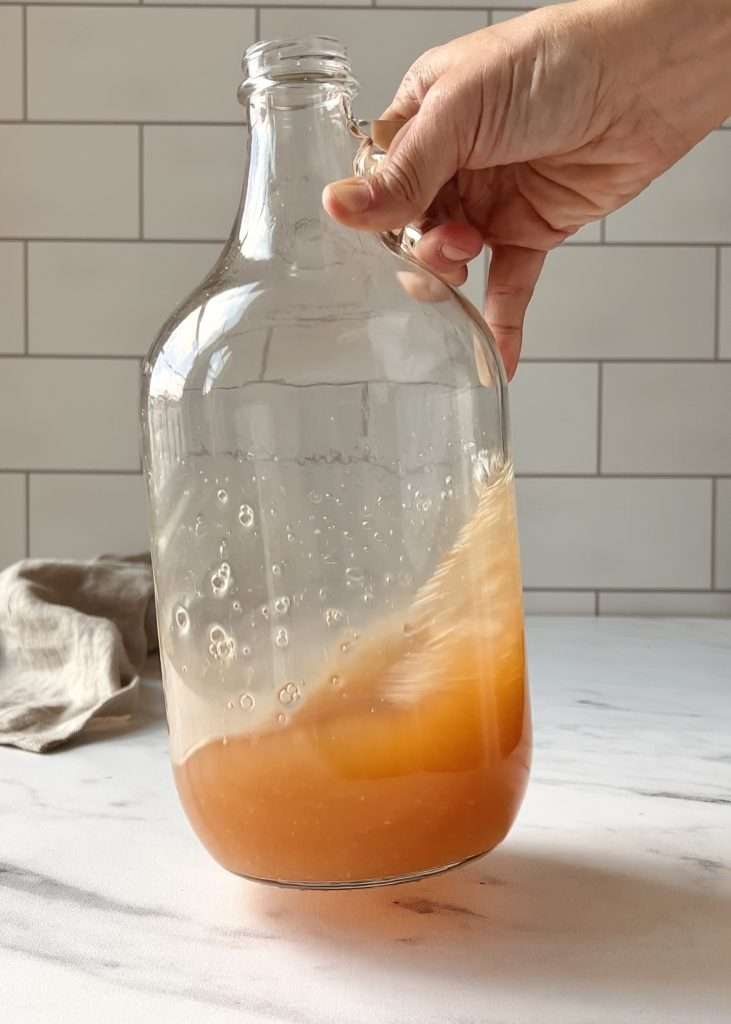
Cider Making Supplies
If this is your first time making cider at home, I highly suggest starting with this half-gallon recipe. This lets you get acquainted with the process and taste test before committing to a large batch.
Here is my Amazon list for brewing supplies. If you have a local home brew store, that is also an option to get what you need.
I got all my supplies at my local homebrew store up the street from my house. At a homebrew store, you can have someone help you pick out the right supplies.
- 1/2 gallon glass jug (with a cap)
- a second 1/2 gallon glass jug (with cap)
- 1 rubber stopper for brewing – You will need to make sure it is the right size for your jug. Some jugs have different diameter openings. I’ve linked the size stopper that fits my 1/2 gallon glass jug.
- an S airlock for the stopper
- a funnel
- large pot for boiling
- cheap vodka (for cleaning equipment)
- Two 1-Liter swing-top bottles (carbonation safe, for bottling the cider)
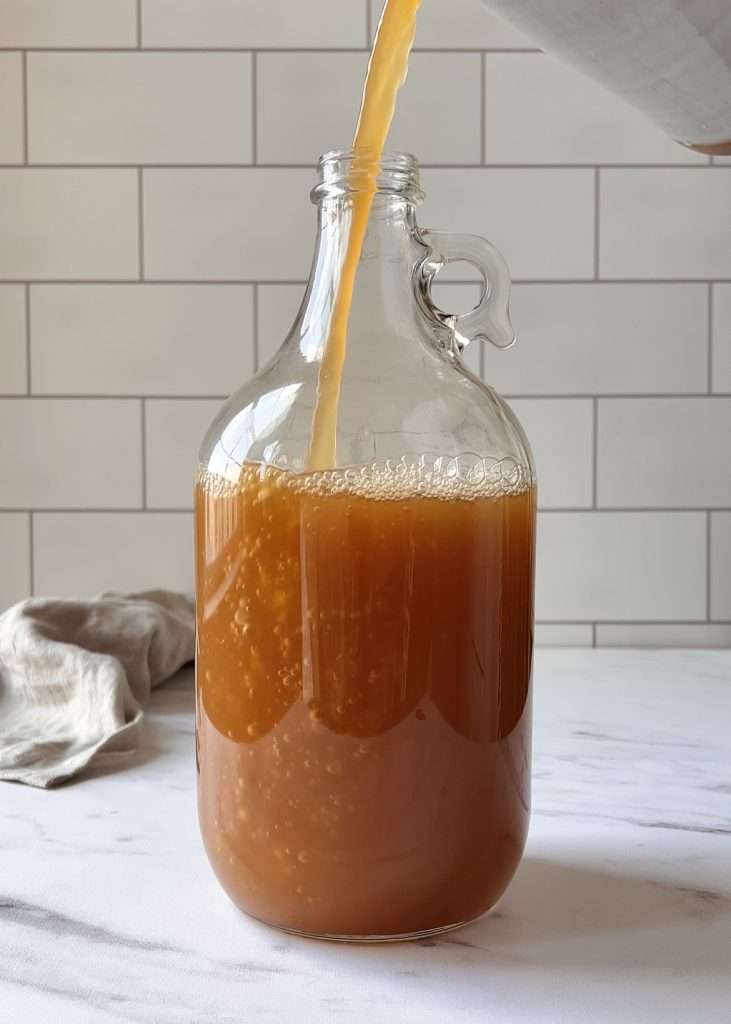


Choosing Yeast for Peach Hard Cider
You can use champagne yeast or cider yeast for this recipe. If you visit a home-brew store, they should be able to help you select a cider yeast.
When buying packaged yeast, I like to make sure that the yeast species is not genetically modified. We chose to use Saccharomyces bayanus. This yeast species is associated with the natural fermentation of grapes, and it’s great for any fruit cider (or cyser) fermentation.
Another option is to use wild yeast. You only need about two tablespoons of wild yeast starter in place of the yeast in the recipe. Click here to learn how to make a wild yeast starter.
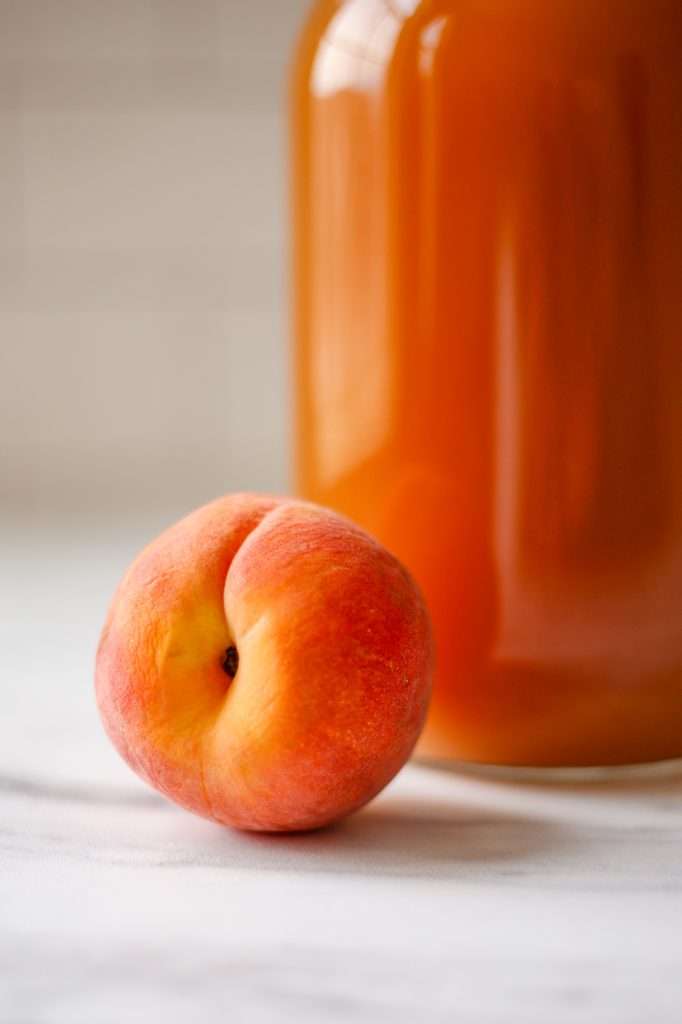
Sparkling Peach Cider: How to Bottle and Store Cider
Bottling and storing this peach hard cider is pretty straightforward. You need to verify that you have carbonation-safe bottles.
This is a sparkling peach cider, so we will carbonate it. To carbonate hard cider in the bottle, we have to add a small amount of sugar, called priming sugar, right before bottling. I like to use honey as priming sugar because it contains a lot of fermentable fructans. More fructans = more bubbles.
The yeast will feed on the freshly added sugar and produce more carbon dioxide. Since the cider is in carbonation-safe bottles with the cap secure, the CO2 is forced into the cider and becomes carbonated. Bottling 1 liter with only one tablespoon of honey is not enough sugar to excessively carbonate. It’s just enough to produce a pleasant level of carbonation.
To make this a still cider instead of sparkling cider, do not add honey or sugar when you bottle it.
You’ll need:
- Two 1-Liter Swing top bottles(Carbonation Safe)
- Organic Honey
How to Bottle
- Clean and sterilize the bottles.
- Add one tablespoon of honey to each 1 Liter bottle.
- Using a funnel, transfer the cider from the aging jug into the carbonation-safe bale top bottles, leaving the sediment in the bottom of the jug.
- Cap the bottles and invert gently twice to mix the honey with the cider.
- Allow to ferment at room temperature for five to seven days, then immediately place in the fridge. You can age the cider for 3 more weeks in the fridge before enjoying it chilled.
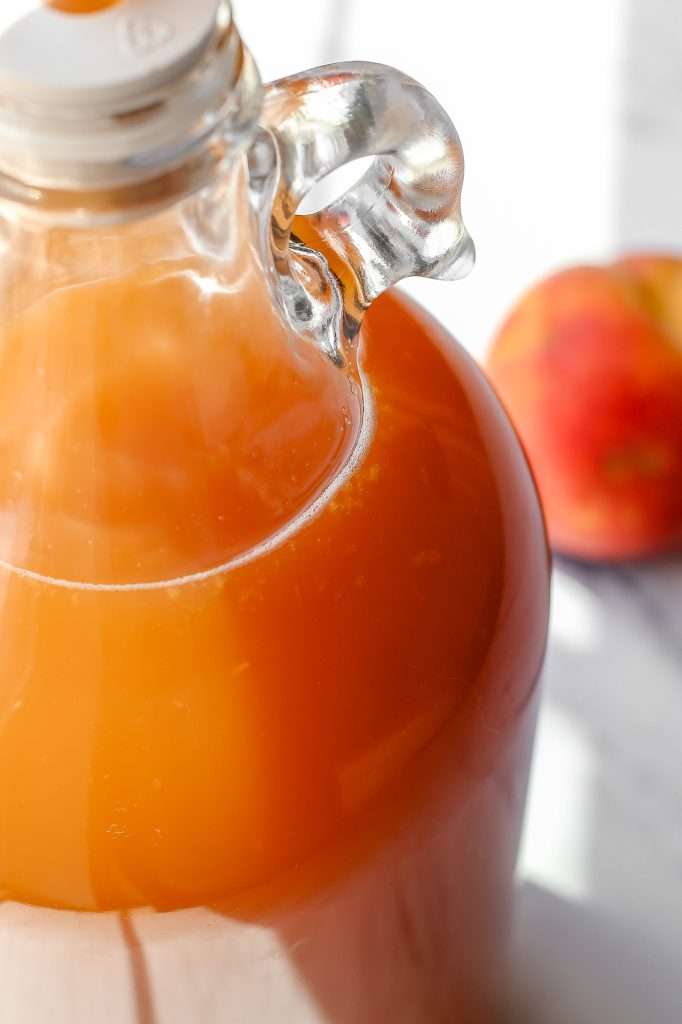
More Recipes to Try
- How to Make Sparkling Hard Apple Cider from Apple Juice
- Vinegar from Scratch
- Hard Blood Orange Cider Bottled with Honey


Homemade Peach Cider Recipe with Honey (Peach Cyser)
Learn how to make peach hard cider at home! This home-brewed peach cider recipe with honey is also known as peach cyser or peach and apple melomel. Includes directions to bottle with honey for a sparkling peach cider.
- Prep: 1 hour
- Cook: 15 minutes
- Total Time: 1009 hours 15 minutes
Ingredients
- 48 fl oz apple juice
- 16 fl oz filtered water
- 500 Grams fresh peaches, chopped
- 75 grams raw honey
- 2 grams cider yeast
Instructions
- Clean and sanitize all of your equipment. I like to wash the jug with soap and water, allow it to air dry a bit, then rinse the jug with cheap vodka and allow it to air dry fully.
- Once your equipment is prepped, add the peaches, water, and honey to a pot, and bring to a simmer. Cook for about 15 minutes; while simmering, mash the peaches a little with a spoon.
- Remove from heat and place a fine mesh colander over a pitcher or bowl; strain out the peach pulp and collect the liquid.
- Allow the peach liquid to cool, then, using a funnel, add it to the 1/2 gallon jug.
- Add in the cider yeast and mix gently by swirling. Wait about 30 minutes for the yeast to get frothy and active.
- In the meantime, heat the apple juice until simmering. Remove from heat and allow to cool to room temperature (if using a metal pot you can place the pot in a bowl of ice to cool it down faster).
- Carefully using a funnel, add the apple juice to the jug leaving two inches of headspace (see pictures above).
- Cap the jug and swirl it around for about a minute.
- Remove the cap and place the airlock and stopper in the jug (see pictures above).
- After a few hours, you should notice a lot of bubbling in the cider and activity in the airlock.
- Allow the cider to ferment for 7 to 14 days until the bubbling completely stops, and you no longer see any activity in the airlock. At this point, you should see a lot of sediment in the bottom of the jug.
- Racking the cider: Remove the airlock and, using a funnel, transfer the cider to a new, clean jug for aging. Be careful pouring; pour gently and in one steady pour, leaving the sediment in the bottom of the original jug.
- Cap the jug with a regular lid. Allow the cider to age at a cool room temperature or in the fridge for four weeks.
- At this point, you can rack the cider again with more aging time or move on to bottling.
- To Bottle the cider with honey: Clean and sterilize two 1-liter carbonation-safe bottles. Add one tablespoon of honey to each 1-liter bottle. Transfer the cider from the aging jug into the carbonation-safe bottles using a funnel, leaving any sediment in the bottom of the jug. Cap the bottles and invert gently twice to mix the honey with the cider.
- Allow to ferment in the bottles at a cool room temperature for five days, then immediately store in the fridge. (check the carbonation by carefully opening a bottle over the sink, if it is not carbonated enough, you can leave it at room temperature for seven days.)
- You can age the cider for 3 more weeks in the fridge before enjoying it chilled. Keep refrigerated.
Notes
- You can use wild yeast instead of packaged yeast in this recipe. You only need about two tablespoons of wild yeast starter in place of the yeast in the recipe. Click here to learn how to make a wild yeast starter.
- be sure to open the bottles to release the pressure occasionally when storing in the fridge for long periods. Don’t worry, though. Bottling 1 liter with only one tablespoon of honey is not enough sugar to excessively carbonate. It’s just enough to produce a pleasant level of carbonation.





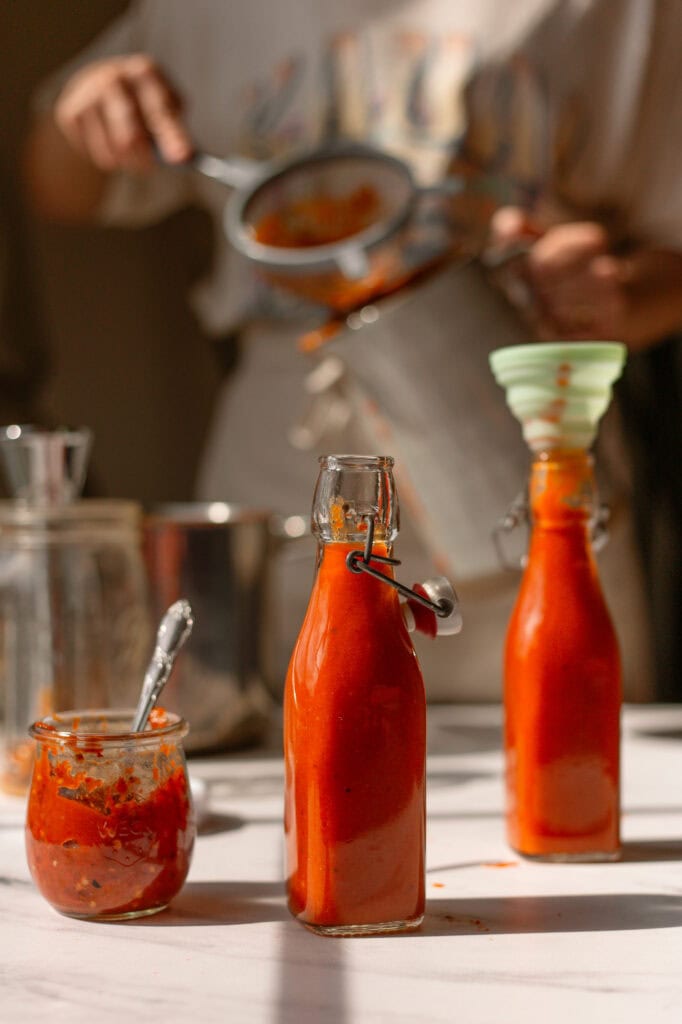





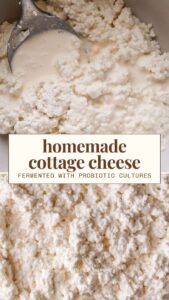

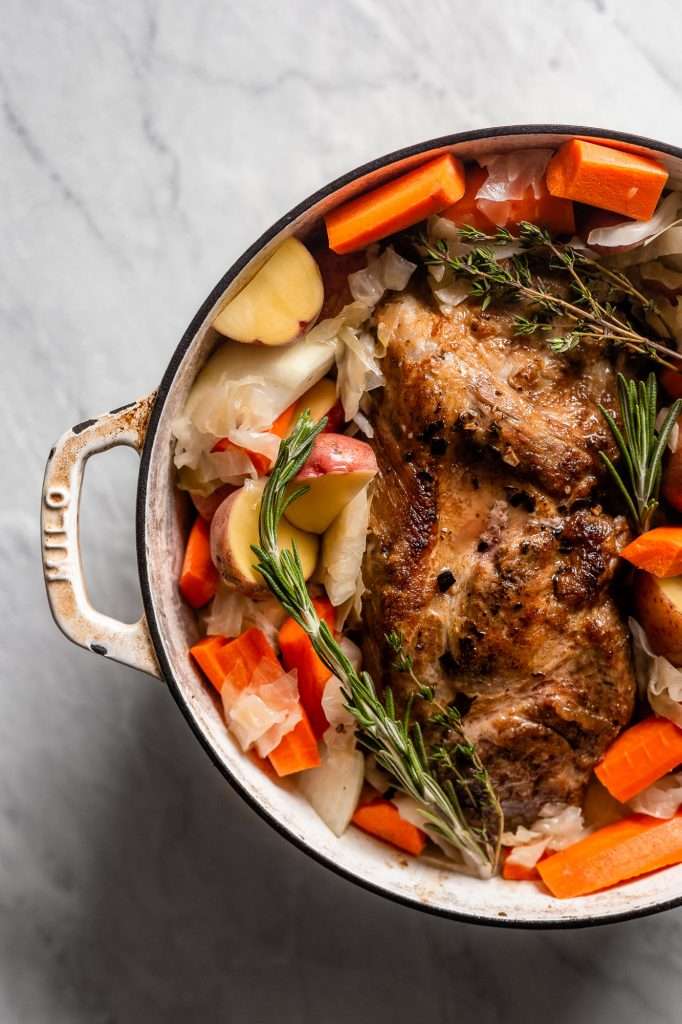
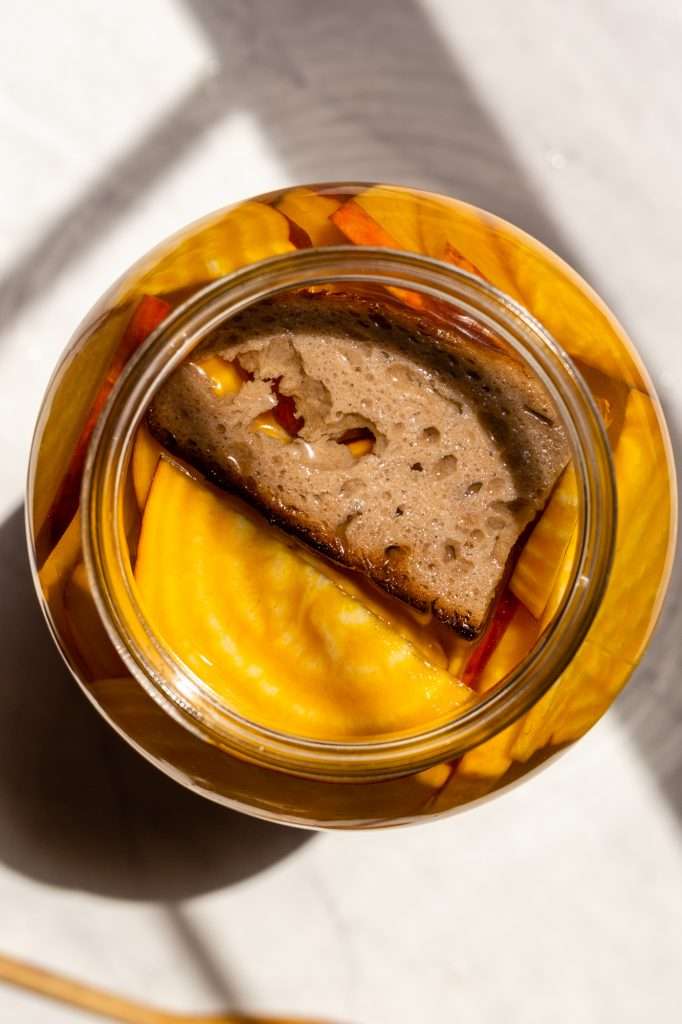




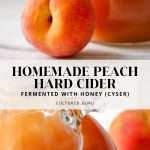
for making the peach syrup liquid, you say combine the peaches, water, and sugar. Do you mean the 75g of honey? Im very excited to make this and want to get it right!
yep!
Can I use apple cider instead of apple juice?
yes! Try to use an apple cider without added sugars though.
This may be a silly question but I did not mix the yeast with the warm water per the package. Will it still work?
Thank you
It should work just fine. I never do that lol
Is there a way to make this non alcoholic? Thanks!
Will the resulting cider have an alcohol content?
yes! the alcohol content is explained in the blog post above the recipe.
What should I do if the peach syrup and cider yeast is still not frothy after an hour of sitting? Is it safe to add the apple juice?
can you see little bubbles if you hold it up to the light? If you know your yeast is not expired and you can see tiny bubbles, go ahead and add the apple juice.
Hi Kaitlynn, curious to know if you would bring to a simmer the base for your cider too when using the wild starter? Thanks.
yeah I usually do, because I only want the microbes from the starter, not any others.
This was fabulous!!! I can’t wait until peach season next year, I will be making a LOT of this.